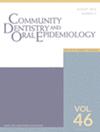Cultural diversity of traditions for the disposal of exfoliated teeth: Implications for researchers
Abstract
Objectives
For decades, researchers in anthropology and archaeology have used teeth, including exfoliated primary teeth, as fossil records of people's physical life experiences. Recently, researchers in psychiatry, epidemiology, environmental health and other fields have recognized the potential for teeth to serve as biomarkers of other early-life experiences, including trauma exposure and other types of psychosocial stress, which are potent determinants of later mental and physical health problems. Despite the emerging appreciation and value of teeth as biospecimens, little is understood about cultural beliefs and practices surrounding exfoliated teeth. If known, such insights could inform culturally appropriate practices for paediatric dental care and improve protocols for the ethical acquisition of teeth as biospecimens in research studies. To address this gap, a qualitative systematic review was performed to summarize the variety of traditions performed worldwide for disposing of primary exfoliated teeth.
Methods
PubMed, Google Scholar, AnthroSource, Anthropological Literature, EHRAF World Cultures and Anthropology Plus were searched with a systematic search strategy to identify articles published from inception through December 2, 2021. Citations of relevant papers were also forward and backward searched.
Results
There were 3289 articles that met the initial inclusion criteria, of which 37 were included after individual screening and applying exclusion criteria. Thematic analysis was used to identify 74 distinct traditions related to the disposal of exfoliated teeth, which were organized into seven general themes: (1) giving teeth to a tooth fairy, (2) giving teeth to mouse figures, (3) throwing teeth, (4) hiding/keeping teeth, (5) burying teeth, (6) giving teeth to animals and (7) eating the tooth.
Conclusions
The results of this study elucidate the diversity within—yet universality of—exfoliated tooth disposal traditions and underscore the importance of tooth exfoliation as a major milestone during child development. Special attention must be paid to these traditions and related ethical concerns when designing research protocols related to their collection. With a greater understanding of beliefs and practices related to exfoliated teeth, researchers will be better equipped to engage children and families in studies that include analyses of exfoliated teeth, collect teeth as biospecimens, and broaden the use of teeth in research.

 求助内容:
求助内容: 应助结果提醒方式:
应助结果提醒方式:


